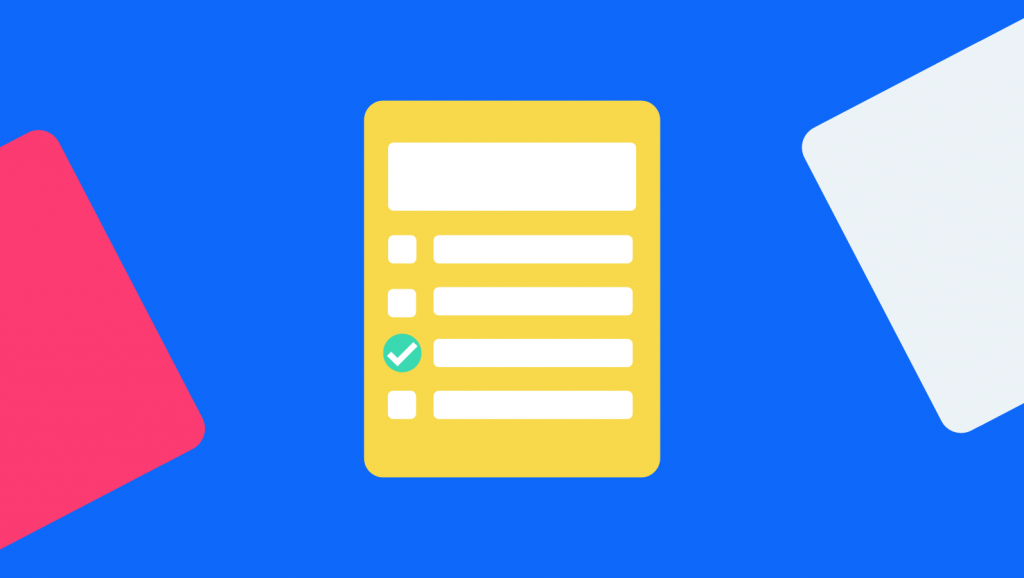How To Create The Best Survey Questions
How to write good survey questions
Good survey questions lead to good data. But what makes a survey question "good" and when is the right time to use different types?

At Pollfish, we have distributed tens of thousands of surveys and manually review them all, so we know a thing or two about writing good survey questions. Our experts have compiled a list of the essentials below into a sort-of questionnaire template to make sure you have what you need to create great surveys and get the highest-quality data.
1. Have a goal in mind.
Consider what you're trying to learn by conducting this survey. Do you have an idea that you want to validate, or are you hoping that you can disprove an assumption you've been operating under? Surveys work best when they are focused on one specific objective. When building the questionnaire for your survey, it is important to offer questions that support your goal.

2. Eliminate Jargon.
Just because a concept is clear to you doesn't mean your target audience is always on the same page. Good questionnaire designs contain good survey questions to be sure. But they also use plain language (not jargon) to explain concepts or acronyms that customers may be unfamiliar with and offer an opt-out for those who are unsure. Don't be afraid to use more than one question or offer an example to ensure clarity on complex information in your questionnaire template— a confused audience leads to frustration and low-quality responses.
3. Make answer choices clear and distinct.
When multiple-choice answers are presented, the respondent is required to make a selection. If these responses overlap or are confusing for the respondent, the quality of the data decreases because they aren't sure what is being asked of them. Make sure answers are distinct and specific whenever possible so the respondent can confidently choose the best answer.
4. Give users an "other" option.
Make sure that, in a multiple-choice sequence, you've given respondents the chance to opt-out if the question doesn't apply to them or if none of their answers fit. Provide an option like "no opinion," "neutral," or "none of the above." You can also offer an option to select "other" and provide an open-ended response that can give you more context.
5. Avoid "yes/ no" screening questions.
Screening questions help you connect with a qualified audience at the beginning of the survey. When respondents select a qualified response, they will enter the rest of the survey. However, people are biased towards choosing "yes" or a positive response when presented a yes/ no question, even if their real opinion is more neutral. To reduce bias, provide a list of possible answer choices with no indication that one is a preferred answer.
6. Don't ask two questions at once.
Each question should focus on obtaining a specific piece of information. When you ask two questions at once using "and" or "or," you're introducing another question, which may have a different answer. This will have one of two results: either you'll confuse your respondents, who are forced to choose the right answer to one question; or your respondents will confuse you with their answers. Either way, make sure you write simple survey questions asking for separate pieces of information as separate questions.
7. Use skip logic when applicable.
Skip logic , or branching, allows you to create multiple question paths based on a previous answer. This means more qualified respondents will be asked to answer more in-depth questions and reduces answers like "don't know" or "no opinion" later on.
8. Use different question types.
Respondents offer better and more thoughtful answers when they are engaged. And that means asking different types of research questions. Use ranking, matrix, open-ended, or multiple choice questions to stimulate them and keep them interested, especially in a longer questionnaire. Different question types not only keep the respondents engaged (which can increase your completion rates ), but can also elicit different responses.
9. Shuffle answer choices for ranking, matrix, and multiple-choice questions.
We are naturally inclined towards the first information we are presented with—the top answer— in a series of answer options. Shuffling the order of the answer choices reduces bias in responses. However, for answers that relate to one another—such as a Likert scale or timeline—it's helpful to keep them in an order that flows logically to avoid confusion or misreading.
10. Add media or images to provide helpful context.
Media—such as images, video, or audio clips—provides another level of clarity to your survey questions. You can use these either as a way to give additional context in the question or offer media as an answer option to be selected.
11. Always keep the audience in mind.
Remember as you are writing the questions to always keep your target audience in mind. The audience can be as broad as the "general population" or as narrow as you need it to be. The important thing is to know who you want to target so you can communicate with them effectively.

Regardless of the types of survey questions you select, questions should be short, clear, and to the point, but also engage the respondent through multi-media and question types. Remember that the less confused your respondents are, the more clear your data will be.
These best practices will help you write good survey questions on any platform, including our own. If you have additional questions specific to Pollfish, check out our resource center or reach out to our Support team to learn more.
How To Create The Best Survey Questions
Source: https://resources.pollfish.com/market-research/how-to-write-good-survey-questions/
Posted by: moultrieheadee.blogspot.com







0 Response to "How To Create The Best Survey Questions"
Post a Comment